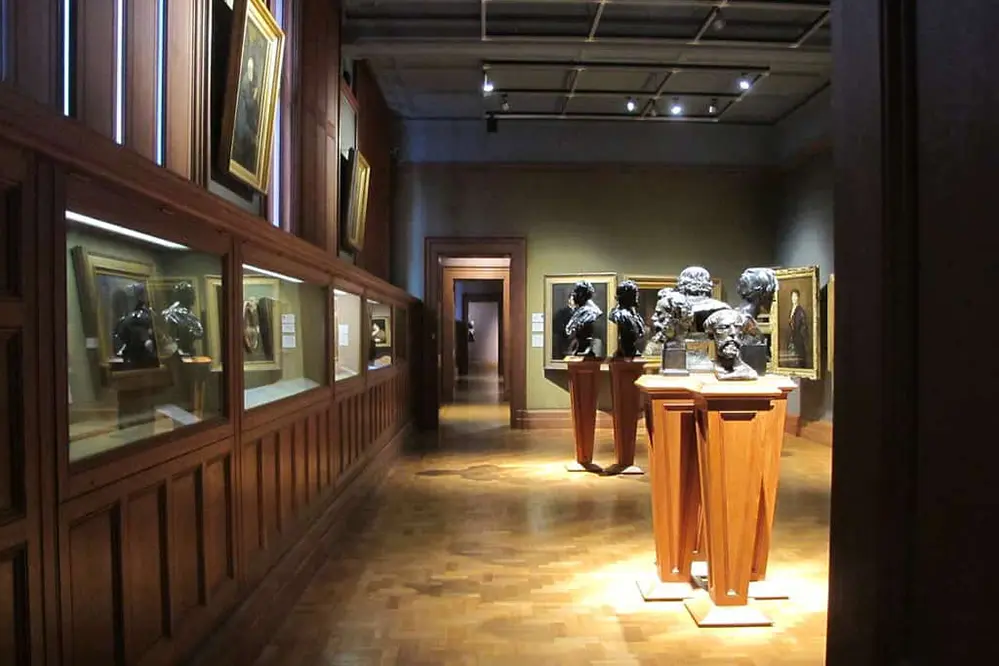In the heart of a bustling city, a renowned art museum unveiled its latest exhibition, captivating visitors with a stunning display of colors and textures. The secret behind this mesmerizing experience? LED lighting in exhibition spaces and museums. This innovative lighting technology has transformed the way art is perceived, offering a new dimension to the viewer’s experience. As the lights danced across the canvases, illuminating every brushstroke with precision, it became clear that LED lighting was not just a tool but an integral part of the art itself.
The importance of LED lighting in exhibition spaces and museums cannot be overstated. According to a recent study, LED lighting can reduce energy consumption by up to 80% compared to traditional lighting methods, making it an environmentally friendly choice for art institutions worldwide. Moreover, LEDs offer superior color rendering, ensuring that artworks are displayed in their true hues, as intended by the artists. This technological advancement is not only preserving art but also enhancing its presentation, creating a more immersive experience for audiences.
As we delve deeper into the transformative power of LED lighting, we will explore its impact on art preservation, energy efficiency, and the overall visitor experience. Join us on this enlightening journey to discover how LED lighting is reshaping the world of art exhibitions and museums, offering a brighter and more sustainable future for cultural institutions.
Understanding LED Lighting Technology
The marvel of LED lighting technology lies in its ability to transform exhibition spaces into vibrant environments that highlight art in its truest form, while also remaining energy efficient.
These innovations use semiconductor materials to emit light, efficiently converting electricity into illuminance, ensuring the precise amount of light necessary for optimal art display.
LED technology is designed to provide consistent light quality with significant longevity, which translates into a reduction in maintenance efforts and costs, making it an ideal choice for museums prioritizing sustainability, efficiency, and the protection of their displays.
Beyond the technical advantages, LEDs offer an expansive range of color temperatures and dimming capabilities, allowing museums to tailor lighting to enhance specific artwork characteristics, creating a more engaging visual experience for visitors. As we step into the future, leveraging the “light-enabling” abilities of LEDs signifies an inspired commitment to innovation.
Benefits of LED Lighting in Museums
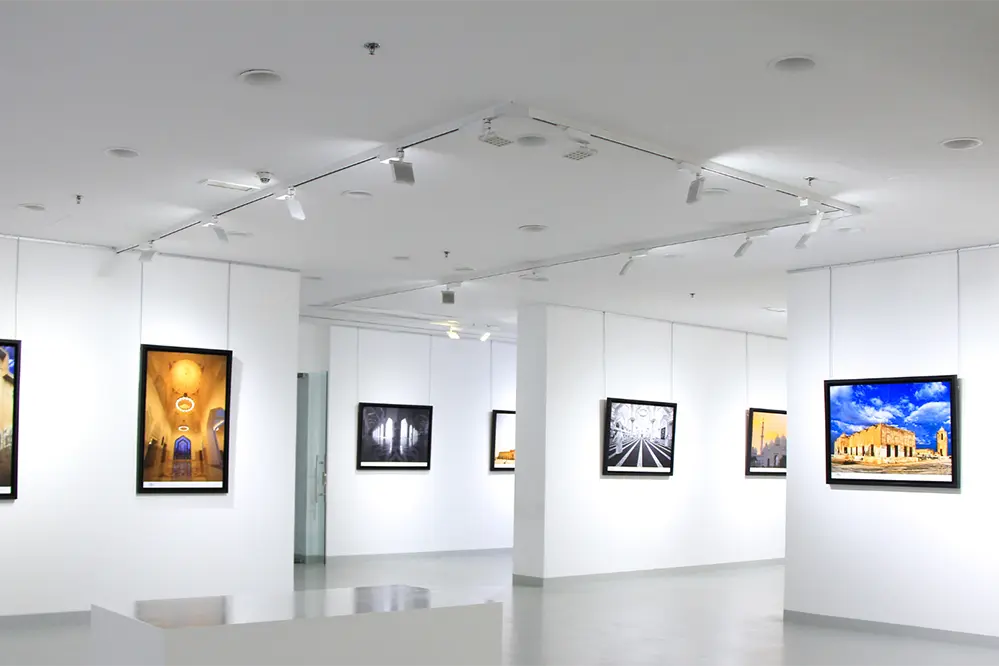
LED lighting provides museums with eco-friendly options that align with institutions’ goals, ensuring sustainability and efficiency.
In museums, these lights offer superior color accuracy, reducing (UV) damage to sensitive exhibits, while also allowing for adjustable settings that enhance visual continuity.
The terms “eco-friendly” and “cost-effective” have become benchmarks in the ‘museum illumination’.
Energy Efficiency and Cost Savings
Incorporating LED lighting in exhibition spaces and museums revolutionizes energy consumption, paving the way for an efficient future. These cutting-edge solutions are synonymous with reduced operational expenses and ecological mindfulness.
Such energy-efficient alternatives significantly trim electricity bills, ensuring that museums redirect savings to enriching visitor experiences. The switchover to LED illuminates both financial and environmental sustainability, proving advantageous for cultural institutions worldwide.
LED lighting can slash energy consumption by over 80%, making it a game-changer in museum sustainability.
By lowering both energy usage and maintenance costs, retrofitting LED lighting in exhibition spaces and museums stands as a testament to enduring innovation. These economical lighting solutions foster a harmonious blend of conservation and artistry, empowering museums to cultivate cultural appreciation without ecological compromise. This strategic shift heralds an era where fiscal responsibility aligns seamlessly with environmental stewardship.
Longevity and Durability
The longevity of LED lighting significantly enhances its appeal for museum environments.
LED technologies, at their core, encapsulate a revolutionary advance in lighting solutions and luminaires, offering unmatched durability that bolsters museum displays. These lamps last substantially longer than traditional incandescent or fluorescent bulbs, with lifespans that can extend up to 50,000 hours. Such longevity not only reduces the frequency of replacements, conserving resources, but also supports museum operations with minimal interruptions.
Statistically, LEDs can last up to ten times longer than conventional counterparts. By installing these robust fixtures, museums can allocate maintenance resources more efficiently, ensuring that the focus remains on the preservation and presentation of art and artifacts without the frequent disruption of lighting replacements.
This impressive durability delivers an operational advantage, significantly decreasing the frequency and costs associated with maintenance. As museums champion both fiscal prudence and sustainable practices, LED lighting in exhibition spaces and museums aligns with these objectives, offering a resilient solution that embodies reliability, resilience, and remarkable endurance in illuminating the cultural treasures of our past and possibilities of our future.
Low Heat Emission
LED lighting in exhibition spaces and art galleries significantly reduces the ambient temperature within treasured gallery environments.
In recent years, Bluworld Innovations, a leading gallery solutions company, conducted tests showing that LEDs emit less than half the heat produced by traditional lighting systems.
Thus, it’s no secret that using LED’s reduced heat emissions is pivotal to creating a stable environment for the artifacts, protecting them from heat-induced deterioration and extending their lifespan.
Reducing the risk of heat damage, LEDs offer an unparalleled advantage that’s not just about extending the 3,000-year legacy of ancient relics, but also about supporting innovative installations and immersive experiences for eager audiences.
Altogether, LEDs ensure a comfortable gallery climate, safeguarding priceless artworks for everyone’s enjoyment.
Designing Gallery Lighting with LEDs
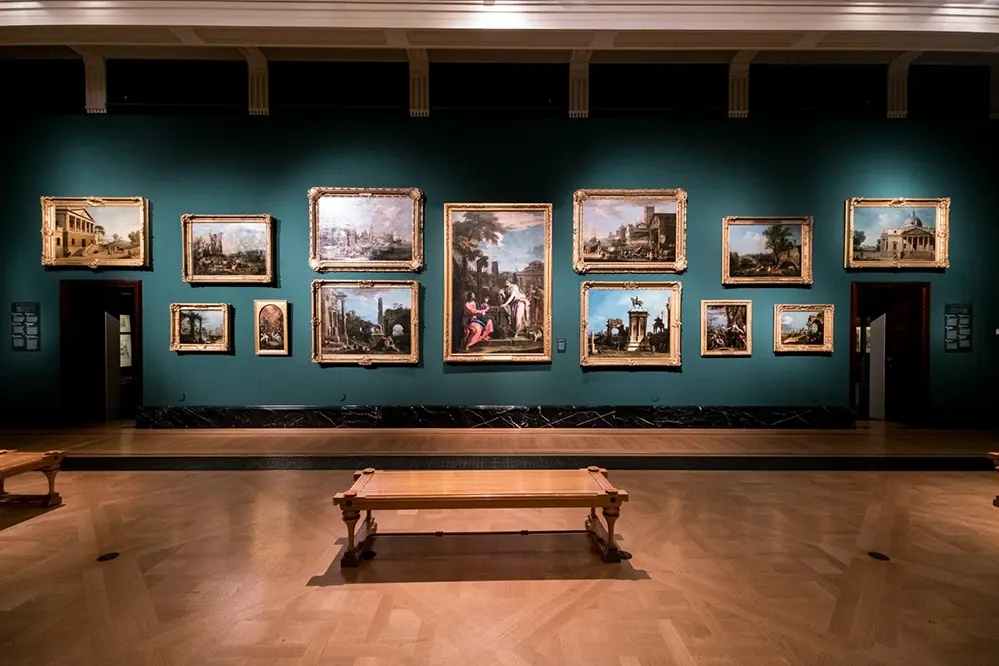
The transformation of exhibition spaces via LED innovations opens new realms of creativity, and curators’ imaginations are unleashed.
To achieve this, LED technology offers versatile lighting dynamics allowing curators to experiment with various hues, intensities, and tones immersing visitors in captivating experiences. Such flexibility of LED lighting in exhibition spaces and museums revolutionizes the narrative power of display, integrating art seamlessly with technology.
The terms “eco-friendly” and “eco-fashion” now become synonymous to curators as the ‘gallery experience’ evolves.
Enhancing Artwork Presentation
LED lighting redefines how art is perceived, marrying technology with aesthetics to create an enthralling visual experience.
In museum galleries, where atmospheric precision is a requisite, LED lights facilitate the meticulous art of presenting masterpieces, allowing their true essence to captivate audiences. This synergy between technology and artistry augments the art-viewing experience, enabling curators to highlight subtle details with unparalleled accuracy.
Traditionally, art faced limitations in showcasing its brilliance under conventional lighting. LED lighting in exhibition spaces and museums overcomes these limitations, rendering vibrant, lifelike colors and textures that resonate with the human eye.
The strategic application of LED lights accentuates the artistic narrative through enhanced color rendering and dynamic focusing. It provides curators the canvas on which light itself becomes a storyteller, shaping how each artwork is interpreted. The outcome is a transformative experience that elevates the perception and appreciation of art, breathing new life into every brushstroke and sculpture.
Adjustable Color Temperature
Adjustable color temperature is a pivotal innovation that revolutionizes how art is exhibited in museums. By offering the flexibility to tailor lighting to the unique needs of each piece, museums ensure that the artwork is displayed in its best light. This adaptability is crucial for presenting art as intended, preserving the integrity of colors and emotions embedded in each piece.
In recent years, lighting designers, in collaboration with renowned institutions, demonstrated how varying color temperatures could emulate the natural light conditions under which the artwork was originally created. By manipulating the warmth or coolness of LED lighting, curators can evoke specific atmospheres, highlighting certain elements of the composition or enhancing the viewer’s emotional engagement with the piece.
Today’s advanced LED systems allow museum professionals to leverage a spectrum of adjustable settings, giving rise to experiences that honor both historical authenticity and contemporary interpretation. The seamless transition between different temperatures is made possible through innovation in LED technology. This allows for a dynamic interaction between the viewer and the exhibit, creating a more immersive storytelling environment.
Critical to the success of this strategy is understanding the relationship between light and human perception. Art connoisseurs appreciate how LED technology tailors exhibitions to suit different times of the day or types of artwork. Whether showcasing a vibrant Monet or an introspective Rothko, the adjustable color temperature ensures that each hue and shade resonates perfectly with the observer.
In summary, adjustable color temperature redefines the presentation of art, enhancing both aesthetic and emotional connections.
Sustainable Practices in Museum Lighting
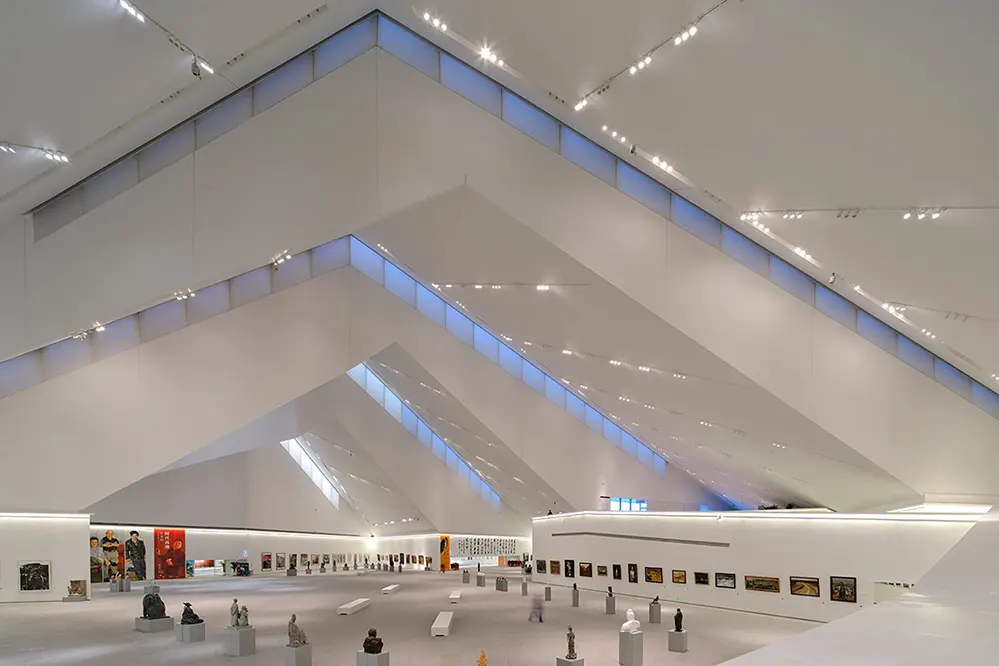
Embracing sustainability in museum lighting represents a vibrant commitment to conserving resources while enhancing visitor experience.
In the realm of exhibition spaces and museums, LED lighting revolutionizes sustainability practices through increased energy efficiency and reduced environmental impact. In recent years, industry leaders have adopted these advanced, energy-saving technologies. Utilizing LED systems not only significantly decreases power consumption but also aligns with global sustainability goals by reducing carbon footprints.
LED lighting dramatically reduces the need for frequent bulb replacements due to its extended lifespan, thereby curtailing waste. This endurance ensures that museums can preserve artworks, minimizing disruption while maintaining seamless, high-quality illumination. The cost savings on energy expenditure and maintenance provide museums with more resources to invest back into preserving and acquiring remarkable art collections, promulgating culture and knowledge.
Enhanced control is another sustainable facet of LEDs, with programmable settings optimizing light output based on ambient conditions. This adaptability ensures that the lighting strategy cultivates an engaging environment without expending unnecessary energy.
Overall, sustainable lighting practices showcase the intersection of innovation, conservation, and artistry.
Challenges of LED Lighting in Exhibitions
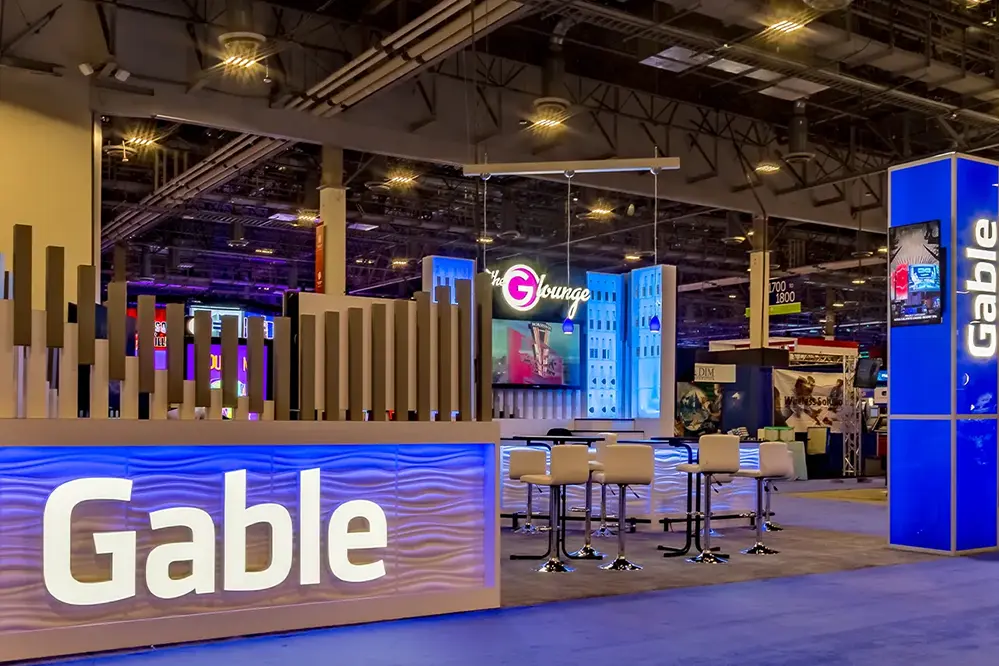
While LED lighting provides numerous advantages, a myriad of implementation challenges, such as color accuracy and intensity control, still exist. Museums strive to meet these challenges by optimizing spectral power distributions that might vary, aiming to achieve that ideal atmospherics without compromising on the visitor experience.
Addressing Color Accuracy
One of the pivotal aspects of LED lighting in exhibition spaces and museums is ensuring that the colors of artworks are faithfully represented, maintaining the integrity of the artist’s vision.
Achieving color accuracy has traditionally been quite challenging in artificial lighting environments.
However, advances in LED technology provide the ability to control the spectrum and thus enhance color fidelity. This flexibility (achievably through programmed calibrations) is unmatched.
Museum lighting professionals can now measure specific spectral needs and adjust the lights accordingly, preserving subtle tonal nuances.
This precision is necessitated by the sensitive nature of some artwork, demanding lighting solutions that are meticulously crafted to simulate natural daylight, ensuring full clarity and depth in hues.
Therefore, with the aid of today’s technology, museums can achieve exceptional color accuracy. Consistent innovation generates solutions that craft truly authentic visual experiences.
Overcoming Installation Complexities
Implementing LED lighting in exhibition spaces and museums poses unique challenges that can initially seem daunting.
In recent years, Museum Tech Trends, a leading industry publication, highlighted how early technological hurdles have been mitigated by innovative solutions. Museums now benefit from flexible infrastructure designs that accommodate evolving lighting needs.
Yet, it’s no small feat that many museums’ architecture is fraught with complexities, necessitating a clever integration of LED systems. Such installations must respect historical integrity while providing modern lighting benefits.
Adapting the myriad of LED configurations to fit the intricate designs has been made easier with modular systems. These systems allow for seamless installation, promising both aesthetic and functional enhancement.
Successfully overcoming these challenges ensures museums remain brightly illuminated sanctuaries for both art and history.
Case Studies: Successful LED Implementations
In recent years, New York’s Museum of Modern Art embraced LED lighting to transform its exhibition spaces. The initiative sought to balance energy efficiency with superior illumination quality, ultimately achieving both.
A key aspect of the project was the integration of tunable white LEDs, offering adaptive lighting that enhances artwork presentation. This innovation allowed curators to adjust lighting levels in accordance with altered moods and thematic intentions, greatly enriching visitor experience.
The Smithsonian Institution followed suit, incorporating LEDs into its vast range of exhibitions. Their adoption of smart lighting systems has drastically reduced energy costs, alongside enhancing the display of delicate artifacts with precise illumination options.
Finland’s National Museum also made headlines by implementing an LED overhaul that has since set standards in sustainable lighting. The outcome has been greater artwork protection due to minimized UV exposure and a 50% reduction in energy consumption.
These implementations demonstrate how LED lighting in exhibition spaces and museums can enhance art presentation.
Future Trends in Museum Lighting Technology
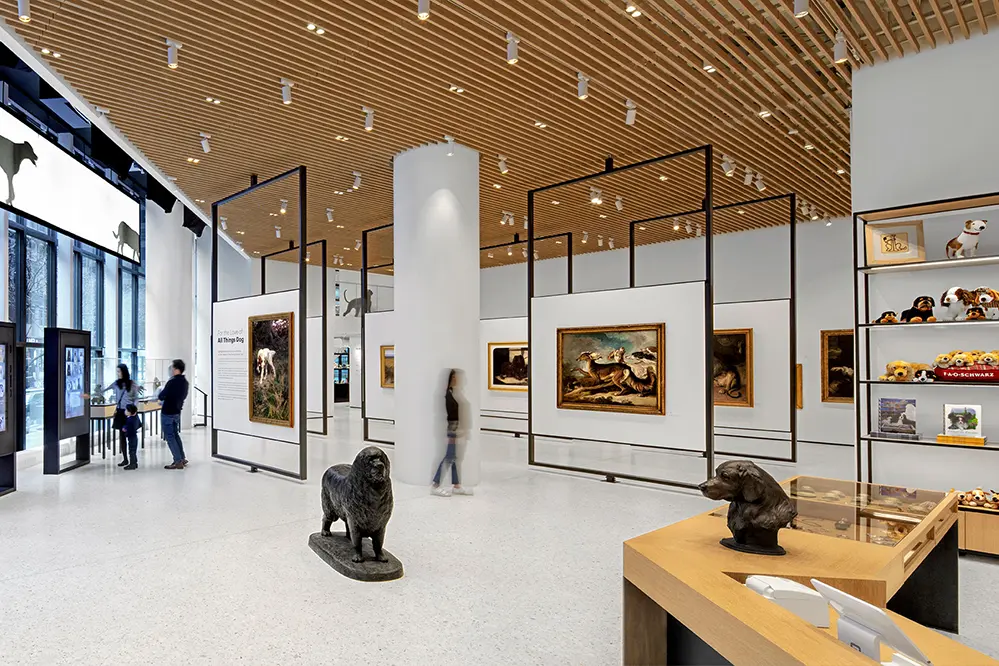
As museums evolve, lighting technology must also advance, ensuring energy efficiency, artistic integrity, and sustainability. LED lighting in exhibition spaces and museums will play a vital role in future innovations.
Emerging technologies aim to transform how light interacts with museum environments. Adaptive lighting systems will continue to expand.
Currently, dynamic lighting solutions adjust to natural light fluctuations, ensuring optimal exhibition conditions. Museums experimenting with (IoT) integration see promising connectivity benefits.
Smart lighting systems will enhance interactive experiences, offering patrons engaging, personalized journeys based on visitor profiles. This advancement enriches cultural encounters.
Museums will prioritize both conservation and engaging storytelling by incorporating energy-efficient systems designed to minimize environmental impact. Future proficiency in these systems will underscore stewardship.
Ultimately, the role of museum lighting will shift towards more sustainable solutions. Emerging technologies promise an era that balances preservation with immersive exploration.
Conclusion
The integration of LED lighting in exhibition spaces and museums is revolutionizing the art world by combining brilliance with sustainability. This innovative technology sets a new benchmark for gallery innovations, offering a luminous storytelling experience that captivates audiences. By enhancing the visual appeal of exhibits, LED lighting transforms the way art is perceived and appreciated.
LED lighting’s energy efficiency and adaptability present exciting opportunities to harmonize art preservation with modern display techniques. This advancement allows museums to redefine viewer experiences, ensuring that artworks are showcased in their true colors while minimizing environmental impact. The shift towards LED lighting reflects a broader commitment to sustainable practices within the art community.
As museums continue to embrace greener technologies, LED lighting emerges as a guiding beacon for sustainable and impactful exhibitions. The blend of creativity and eco-friendly advancement encourages further exploration within the museum landscape, ushering in an era of responsible illumination. Together, we look to a future where art meets technology with both brilliance and purpose, paving the way for innovative and sustainable cultural experiences.
